Kia ora! Hope you’ve had a great week with a few last-month-of-the-year celebrations thrown in.
Header image: the Maungarei Reindeer, via twitter.
The week in Greater Auckland
On Monday, Matt wrote about the Transport Choices funding package: a nationwide $350m fund to deliver transport projects that align with the Emissions Reduction Plan.
Tuesday’s post covered the future of the Auckland rail network and the current ‘day one’ timetable plans when CRL opens.
Wednesday’s post was about a couple of worrying items in the Mayor’s 2023/24 budget proposal which suggested reducing public transport services and raising fares.
Yesterday, Matt argued that it’s time to re-think current plans for light rail in Auckland to make sure it’s a sensible and achievable project.
Transport questions in Tāmaki Makaurau
The Transport Choices funding package was met with a collection of positive headlines and happy mayors around the country – except here in Tāmaki. In his column this week, Simon Wilson asked why the mayor wasn’t more excited about the fund when in lots of ways it represents many of the issues he campaigned on, like local communities making decisions about what happens in their areas.
This is a test. Is the mayor serious about supporting projects the local communities want? Is he committed in any meaningful way to lower emissions? Does he recognise the changing needs of areas like Great North Rd, filling fast with apartment blocks?
And will AT advocate for its own plans, after spending years developing them?
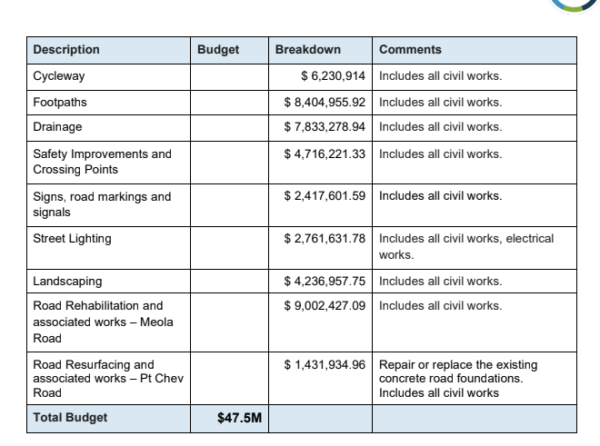
New Waitematā Councillor Mike Lee has called for the Inner West cycleway and improvements projects to be put on hold. We like the advice of this cycling campaigner: let’s bombard him with letters expressing our support for the projects.
NewstalkZB isn’t a site we link to on Greater Auckland very often (it’s not exactly known for its interest in PT and active modes.) But this piece about getting to the Billy Joel concert at Eden Park caught our eye. Its writer was frustrated that the train wasn’t running, so took an e-scooter the bike path instead – but he’s not convinced other Aucklanders are ready to make the shift just yet.
It’s all about choice.
I have a friend who lives round the corner from me who bikes. But he chose to Uber home from the concert. It cost him $100 and he arrived home an hour after me. My total transport cost was 5$ return on the ferry.
So Michael Wood’s transport spend up announced this weekend will be an investment that will never be appreciated unless New Zealanders freely make a choice to take a punt on PT. For that it needs to be safe and efficient.
All we want for Christmas is a regional rail network. While that’s obviously not on the cards this year, it’s disappointing that Te Huia won’t be running. There won’t be any services between the 24th of December and 14th of January while work is done on the Auckland rail network.
Waka Kotahi’s trial of cameras able to catch people driving while using mobile phones or not wearing seatbelts has finished. Over 200,000 people were caught using their phones during the 6 months that the trial ran.
And for a trip down memory lane with some inspirational vintage street style, here’s a clip of Auckland in 1970.
Auckland in 1970 pic.twitter.com/lBU0bIeL8z
— Chamfy (@chamfy) December 7, 2022
Decisions coming on fuel and public transport subsidies
We might know about the future of Labour’s transport subsidies as soon as next week. A decision about whether to extend te 25% fuel tax cut and half-price public transport fares is in cabinet processes right now, and the last cabinet meeting of the year is on Monday.
The public transport subsidy is very popular with New Zealanders: 79% of respondants to a 1news Kantar pole wanted to see it extended.
Transport bright spots around the motu
Transport Choices has meant an early Kirihimete for some communities. The Waikato region is in line for $57m from the fund, whic will be spread among Hamilton, Waipā, Matamata-Piako, and Taupō. In Hamilton, the money will go towards cycling and walking connections, and improving bus stops.
Around $28 million will go towards new cycling and micro-mobility projects to improve safety and accessibility. This includes linking communities to the Western Rail Trail and additional cycle links into the Claudelands East area.
About $9 million will go towards upgrading the likes of bus stops and bus shelters, and installing a new roundabout with pedestrian crossings at the Lake Rd and Commerce St intersection.
In Richmond, Nelson and Motueka, the money will be used to bring forward safety and walking and cycling projects that would have been a lot further down the list in the long term plan.
Projects on the cards include a network of separated cycle lanes for Motueka, as well as traffic-calmed slow speed areas, “safe roundabouts”, bus shelters and secure cycle parking.
Richmond is to get 1.2km of separated cycleways, 460m of traffic-calming in the town centre, six roundabouts with raised tables and 13 “speed tables at key crossing points”, and four “protected cycle parking” stations.
Meanwhile, much-needed protected bike lanes are steadily popping up in Pōneke and Ōtautahi. We’ll definitely be riding this when we find ourselves in Christchurch next.
https://twitter.com/christchurchcc/status/1600644217352511488?s=46&t=6nvazGVZTjDq6FT0uj1pTQ
And it’s simple but effective – temporary bike lanes working how they should in the capital.
It’s nice not having to worry about being doored or close passes
Loving this new Cycleway @WgtnCC pic.twitter.com/ntJ6BjdcPG
— Felix Marwick (@felixmarwick) December 7, 2022
Sticking to the theme of small interventions that make a big difference, we loved this article on The Spinoff about Waka Kotahi’s new marae signs. The signs, which come in two different designs, are Aotearoa’s first official marae traffic signs.
The impact of these tohu cannot be understated. Marae are the hubs of te ao Māori serving as pre-schools, churches, playgrounds, whare wānanga, homesteads and venues for almost every major life event. Not only do these new tohu help keep our young and old safe but they also give greater visibility to our marae, our reo and te ao Māori more broadly.
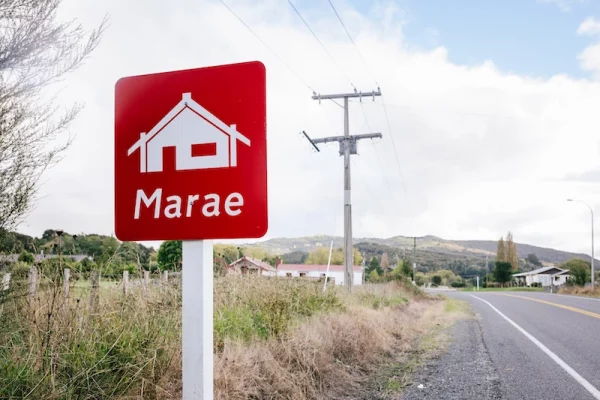
Checking in on the week in flooding
Niwa’s done a handy wrap of the season’s weather. It’s been an unusually wet and warmer than average spring here the north of Aotearoa – so if you’ve been feeling like it just keeps on raining, you weren’t imagining it.
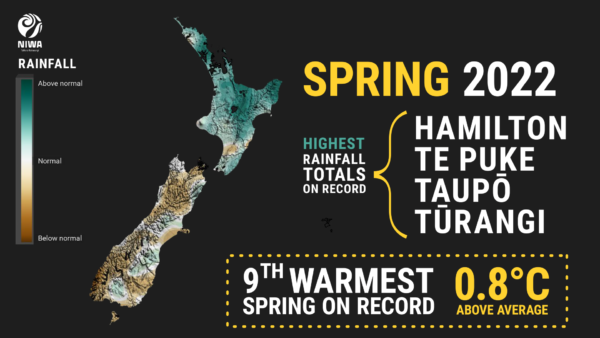
And as the British government moves to make things harder for climate protestors, the Brazilian city of Florianopolis was hit by widespread flooding this week, reminding us that the effects of climate change will be a lot more disruptive than anything climate protestors can do.
TBH, this seems worse than having the road blocked by climate activists for a few minutes.pic.twitter.com/XsNvHfSl29
— David Ho (@_david_ho_) December 5, 2022
Places for people
Are you one of those people who likes to drift off the footpath and balance along a low wall or the edge of a kerb? A playful city is good for kids and turns out that incidental play opportunities in cities appeal to adults too. This study found that many adults will choose a physically more challenging and playful path if it’s presented to them.
Co-author Dr Paul Hanel said: “Children don’t need much encouragement to try out a balance beam but we wanted to see how adults would respond, and then identify design modifications which made them more likely to choose a challenging route.”
“We found that while embarrassment, anxiety, caution and peer pressure can put some adults off, the vast majority of people can be persuaded to take a more challenging route by paying careful attention to design, safety, difficulty level, location and signage.”
Eleven city blocks of New York’s 5th Avenue were opened to people (and closed to cars) on the weekend, and will be again on the 11th and 12th of December. NYC Department of Transport organised the Open Streets event to contribute to the city’s christmas celebrations.
Takapuna hosted its own open street in the weekend, with people flocking to newly upgraded Hurstmere Road for a Christmas carnival day.
https://twitter.com/richardhills_/status/1598845121285746689?s=46&t=YUPy4wGkK-B_nIYBBkDrhQ
Open Streets give a great demonstration of what current streets would look like if the cars were removed. And if we dig a bit deeper, there are plenty of examples of car-free spaces that were once roads in cities around the world, like this one in Valencia. It’s a useful reminder that cities continue to change: things don’t stay the same, and we get to remake our cities so they work for evolving communities.
Guerilla crosswalks have become an expression of frustration for pedestrian safety advocates. In the United States, where road safety has been getting worse not better, unsanctioned pedestrian crossings painted by activists are popping up with increasing regularity in several cities. Their quick removal by city authorities highlights how difficult it can be for communities to see safety improvements made in their neighbourhoods.
“This is infuriating,” Seattle councilmember Andrew Lewis tweeted. “We have the time and money, apparently, to expediently REMOVE a crosswalk, but it takes years to get around to actually painting one. No wonder neighbors took it upon themselves to act.”
Road pricing to require drivers to pay their fair share
We highly recommend reading this substack on the importance of road pricing, which will contribute to the next evolution of London’s Ultra-Low Emissions Zone.
Free road use is not ‘individualism’, it’s an example of the inefficiency and poor service that follows when the price mechanism is absent.
If you’re stuck in traffic in an urban area, it’s because that piece of road is being underpriced. No one likes the cost of rush-hour trains, for example, but we understand that, if they weren’t more expensive than other journeys, they would become even more unbearable as everyone piled on to the same carriages. As a result, we would all suffer.
Riding the bike boom
Ebikes are the global boom industry we’re excited about – and this Nelson-based ebike designer is too. Frank Witowski’s company Hybrid Bikes is about to expand into the European market, where he estimates he could sell tens of thousands of his carbon-framed communter ebikes per year.
Demand was on the up as people considered what they could do about global warming and rising fuel costs.
“People who have never considered riding, they consider it now,” Witowski said.
“If everybody would leave their car and jump on a bike, what a big difference that would make.”
In Germany, ebikes are the most popular form of electric transformation. A Deloitte study found that people preferred Ebikes to electric vehicles and e-scooters because they’re both practical and fun.
“According to the respondents, e-bikes convey a higher fun factor (37%) and greater usability as sports equipment (22%),” the study reads. “The fact that the electric motor only supports the user’s physical performance and does not entirely replace it differentiates e-bikes from other means of e-mobility. In contrast to other means of electric transportation, e-bikes are commonly used for sporting purposes (40%) as well as for recreational tours and excursions (67%).”
Montreal is a quiet success story when it comes to bikes as transport. As reported in an earlier Roundup, the city is building 200km of bike lanes in the next 5 years, and they’re not mucking around. For a city that’s deep under snow for a third of the year, two blocks per week is impressive progress.
The speed that the city rolls it out too is so good. They just whack down some new asphalt, place the concrete barriers down and it’s good to go. For the main roads it’s probably like, two blocks a week? pic.twitter.com/mfcYjU9CRG
— John N (@johnage) December 2, 2022
Journeys to dream about
Is Tokyo’s Yamanote line the world’s most important transit line? It opened in 1885, has just 30 stations, and moves more people than any other transit lines in the world.
We’re tempted to book tickets to New York City just to visit these glorious mosaic artworks in the soon-to-open Grand Central Madison station.

Check out this time-lapse of a ship’s journey from Rotterdam to Amsterdam, and count the lifting bridges…
Boat traveling from Rotterdam to Amsterdam pic.twitter.com/qA1IpqEejt
— Fascinating (@fasc1nate) December 3, 2022
‘Tis the season for …
Christmas markets filling up town squares and public spaces. This article lists some of the world’s best, from Vienna to Chicago to Hong Kong.

Seasonally decorated active modes: we’re highly impressed by this cargo bike-turned-reindeer carriage.
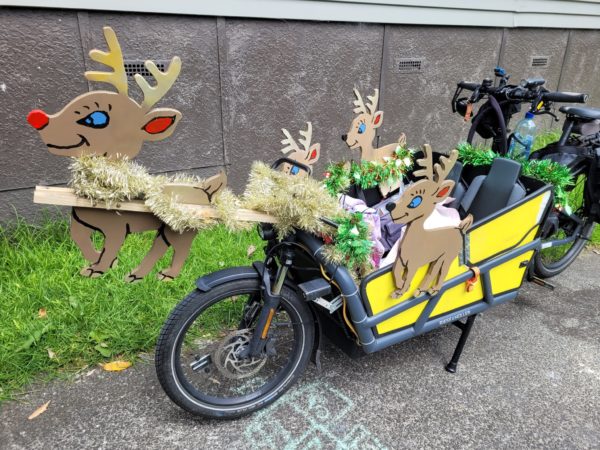
Celebrating Kirihimete downtown! The Te Komititanga Christmas pavilion is alive with performers and music every Friday, Saturday and Sunday throughout December.
Auckland city centre having a nice time today https://t.co/cPx2jEq7lU pic.twitter.com/uhLoG1TOAO
— Chamfy (@chamfy) December 3, 2022
Kia pai ake tōu wikini! Have a great weekend, and see you next week.
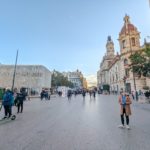
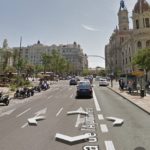

 Processing...
Processing...
Great roundup as always, thanks.
The video of the boat’s journey from Rotterdam to Amsterdam is really neat.
Bike lanes are very easy to build,it’s the car parking removal,which is the hard part. The breakdown of costs for inner west is telling,suffice to say,it will be hard to see a similar cost breakdown like that in the future,kudos to the AT worker/s ,who managed to get that past the hierarchy .Regardless of future costings, this can always be trotted out to show percentages,opposition to cycleway, would also mean opposition to footpaths,as it is a greater spend.
I bet Andrew Dickens ,will have fun at ZB Xmas party,shunned by all for breaking the code.
I think to an extent the push to only demand protected bike lanes was really stupid move. Yes protected bike lanes are 100%, superior and needed long term, but the issue is they cost 1000 time more per meter than bike gutters.
The real fight is for space, if you only demand protected, it is so easy for the powers that be to say sorry we have no money for that, the free parking stays.
“if you only demand protected”
Not sure if that’s what you are saying, but if you mean that we should (at least sometimes) ask only for paint-only lanes – sod that. Sorry, but they don’t change things. They make existing riders slightly safer, but don’t really draw many new ones. In fact, much of the pitful growth they create (there was a study by Via Strada ages ago) may well be by pulling existing riders from alternate routes. 5-15% extra riders is nothing when you barely have any on the route to start with.
Meanwhile, protected routes are ethically and professionally correct transport design, and if done correctly (i.e. without missing pieces) will actually bring new riders. Paint only lanes are almost never worth the bother, and I say that as someone who’s fought for them daily and weekly as an advocate for half a decade or more (before I came to the above conclusions, and thankfully, the official guidance also changed).
Well I think there are two steps:
1. Make painted bike lanes everywhere.
2. Upgrade to protected lanes.
We should start doing both of these at the same time, but the painted bike lanes are much faster to build so they will finish sooner.
Step (2) should be the default during roadworks. Meola Road is a good example, but given the shit storm around it I don’t expect any future project manager to risk it.
Also, I thought the idea that painted bike lanes do nothing is a myth. Riding on a painted lane certainly beats riding past parked cars. You can’t possibly argue otherwise and not be trolling. Of course the key thing here is not the line of paint, but it is the lack of parked cars you have to swerve around. It is also assuming the painted lane is actually laid out properly — if your painted lane takes up less space than a protected lane would, you are doing it wrong.
Look at how much bike infrastructure has been built over the past 5 or 6 years, it is pathetic. Now remove off road shared paths, it’s basically nothing.
How many project Waves does Auckland need to have meaningful network? It is just not going to work.
Bike gutters as stepping stone to protected lanes should be an option. The space is harder bit, need thousands more per meter at that time only make it easy for the powers that be to say no. Big bike gutters with painted boxes for Tim tams to be later installed, should an approach.
Space is absolutely critical, yes. But there’s more to be gained from holding expectations at where they should be: all ages safe cycling, not bike gutters.
AT are supposed to be the experts. Their active modes staff know – and their management and traffic engineers should know – that creating a dense network of protected biking and safe walking infrastructure is a non-negotiable element needed early in Auckland’s transport system’s transformation. Had AT been functional, we would have had a steady programme of quality street upgrades since 2010. They would *also* have been steadily increasingly their tactical programme for quick street space reallocation, which in turn would be ramping up the size of the upgrade programme.
I think the fight to concentrate on most is the one about why governance and leadership have been so abysmal that we’re even having to consider demanding something that wouldn’t provide safety for children.
As a steppingstone in some situations.
AT have built pretty much zero new on road bike infrastructure since only protected was accepted. The cost of protection has been weaponised as another reason to say no. This compounds when we have bloated projects like Te Whau that end up a money sinks.
Yeah it is a weird situation, the thing I seem to remember from a few years ago is that they were going to limit themselves to the flashy stuff like what happened on Karangahape Road. That would be extremely bad.
I am not sure how big the distinction is between protected and unprotected, tbh. In practice if they make a painted bike lane, I would half expect at least some concrete dividers or bollards to be added in a few strategic spots, like at intersections or on the inside of bends.
I personally not too fussed about protection in the areas between intersections (but that is maybe just me), but I would really like bike lanes to continue across intersections. This is common practice overseas but almost unheard of over here.
I think we also need AT and others to make some quick moves where they can easily do so – I ride on Rosebank Rd most days- I ride in the shoulder for the vast majority of its length it is a No Parking area -and in my experience this is adhered to. Add protection to places like this and you can get others to use it too.
In my experience as an advocate AND transport engineer working in the space is that it is very rarely a case of “We can do a painted lane easy, but not a separated lane”. Yes, of course sometimes it will be the case. But usually, you need at least 3m (1.5m each way) to get a painted design, but only ~80cm more to get a basic protected design. Ignoring of course all those Upper Harbour Drive objections that if we dont have 5m wide lanes plus a flush left over, all those drivers will collide all over the place.
So basically, the jump from painted to protected is not big in terms of width. And more importantly, in nearly all cases EITHER option will require some parking removal and/or kerb changes (and once you DO kerb changes, it often doesn’t matter whether you move them 30cm or 1m).
So basically, the fight and political battles are often pretty similar. The outcome? Very different. That’s why I sincerely do not believe its worth going for painted lanes. Fight for something worth it.
The fact that AT is not rolling out enough bike lanes isn’t won by doing a few more painted lanes more that only help the ones who already ride. The opposition doesn’t give a toss about painted or not – they will (and have been sadly effective) at opposing anything anyway. Lowering our expectations in that way will not help.
What WOULD help is a Barcelona approach of rolling out a minimum viable (and protected) *network* in a very short time, using treatments that are cheaper and faster. But neither our politicians or our bureaucrats are willing / able to do that. It always turns into a massive “whole of streetscape” upgrade, and woe to AT if there’s some plastic cones anywhere, the boomers will claim we are destroying the amenity of their suburb.
I don’t have a smart and glib solution. But I know slapping some paint (alone) down is not it.
Yeah that makes a lot of sense.
I feel a lot of problems with painted lanes come down to either it is too narrow, or they did something inanely stupid with the layout like putting it on the wrong side of a parking lane. I will expect that a protected bike lane and a painted bike lane have the same width and the same layout.
If it is only a little extra effort/cost to add concrete dividers to a painted bike lane we should just do it.
The reason painted lanes are often historically “on the wrong side” of parking lanes is multi-fold. When you move them to the kerbside of the cars, there’s no space to avoid an opening door – so you need an absolute minimum of 0.5m (better 0.6-0.8m) of door buffer. And that’s without any allowance for overtaking bike-bike. So your painted lane now has car parking protection, but is also 1m or more wider overall in the corridor.
As for adding protectors to existing painted lanes. Well yes, that’s the whole point of the pop up cycling programme that added protectors to Upper Harbour Drive, and (so far) only some other small sections of road like Grafton Road north of Park Road.
But as we can see at Upper Harbour Drive – even where such protectors fit, they are not by any necessity safe from massive backlash. It’s (in my view) only very partly for actual technical reasons, and much more about cultural pro-driving reasons that really oppose any re-alignment of priorities / funding / space. Those cannot be overcome by the cycling fraternity discussing whether or not we should try for different designs / less extensive designs / etc.
+1 Max
Nice to hear about Hurstmere Rd getting positive feedback. It was a slog getting to where it ended up, and I was always a bit of two minds – wished we could have done more. But sadly we weren’t confident of achieving low enough flows to make it a shared space, let alone a pedestrian mall (not without cutting through traffic – making it one-way was the best we could get agreed with decision makers in terms of reducing traffic flows and space taken up by cars).
Hm interesting, which traffic flow are we talking about there? I would expect all through traffic to go around it via the Anzac St/Lake Road roundabout even with the current arrangement. There are also not a lot of driveways over there.
Shared spaces – flush, no footpath kerbs, pedestrians to have effective right of way everywhere and even expectation of being able to walk right in the street – that needs VERY low traffic flows to work. It simply wasn’t credible to be confident of achieving it without cutting off movement – yes, some traffic does divert to Anzac / Lake, and maybe a little more if we’d flushed the street, but certainly not all, not enough. The one-laning at least took 50% (speaking glibly, not sure whether it ended up 55 or 45% in the end) off the street flows, and reduced the width needed.
I just hope no one reads the story of guerilla crosswalks and thinks that would be a cool idea to bring to Tamaki Makaurau. Going out and painting a bunch of zebra crossing stripes on our streets will definitely make the world less safe than it is at the moment. The sad truth is that Auckland drivers a crap and even fully legal pedestrian crossings can be dangerous if pedestrians trust that drivers will stop for them. That’s why AT is spending so much effort trying to put as many as possible onto speed tables. So how much worse will it be if a pedestrian sees white lines painted on the road by some guerilla painter. They won’t have any right of way over a driver and that driver:
– won’t have passed a warning sign showing there is a crossing ahead;
– they probably won’t have driven over a diamond symbol giving that same warning;
– they probably won’t have a limit line 5m back from the crossing point to show where to stop;
– they won’t have seen the vertical notification of the location of the crossing in the form of a black and white striped pole with an orange disc or flashing orange light on it.
It will be even worse if the guerilla painter thinks that roads wider than 15m or ones with multiple lanes are the dangerous places that they can make safer with an illegal pedestrian crossing.
With Auckland drivers being so crappy I don’t think it is a very safe idea to encourage pedestrians to mistakenly walk confidently into the road with so much less protection than they would have at a proper pedestrian crossing.
Speed tables reward huge, high riding SUV and utes at the expense of smaller compact sedans and hatches. They aren’t the panacea of crossing safety that some people want to make it out to be.
Yes, they do nothing for Utes.
They are also like mountains for busses, particularly harsh on people standing.
Yeah should be proper narrow wrought iron bollards like in London – easy for cyclists too. Really make you slow down otherwise the Ranger will get wrecked
This is certainly true of the speed table outside the Auckland Art Gallery. I’ve seen many SUVs take it at speed, which makes the high-traffic pedestrian area outside AAG more dangerous than it should be.
The short-term solution is to make speed tables highly visible and slightly alarming-looking so that drivers slow down because they 100% notice it and are slightly alarmed. The AAG speed table is practically the same colour as the road and I’d imagine that some drivers don’t even see it until they lurch upwards.
Yes, that is partly my worry too – SUVs are much less affected by speed tables than normal cars, so there’s another incentive to buy the damn things.
Raised tables still have an effect on SUV drivers, but sadly it is more in an alerting sense and with only a reduced traffic slowing sense.
Of course new guidelines this year have also reduced the gradients on arterials and bus routes further, to a degree that I am sceptical of the future main road ones having much effect at all.
Heidi’s summary of how we got here is sadly apt. I might quibble with one or two details, but our people-hostile driving culture is just that: A culture that society has fostered for decades through infrastructure and policy.
The more ludicrous your jacked suspension, the more susceptible you are to rollover, so there is a bright side.
Swedish tables are hard but fair, since you really have to get down to 20kph to deal with the front face, but the backside is smoothed off.
Swedish tables are a lot better for bus passengers (they have been specifically designed by AT for that, including accelerometer tests inside the bus at different seating locations).
However, even those have been weakened (on arterial roads) in a recent AT Practice Note to only 1:20 or at most 1:15 gradient on the upstream (the ones built in recent years are 1:10s). It’s maddening – for a SUV, a 1:20 literally is barely perceptible. Heck, even by eye it’s a bit hard to see sometimes.
Don’t paint white stripes. Paint (Chalk Spray?) lots of interesting patterns that creates, not so much confusion, but a wonderment of what is that?Slows everyone down. I’m going to look at that in my neighbourhood when school is back next year. Heaps of kids crossing a particular 3/4 roundabout type intersection with absolutely no protection. Just slow down……
Bollocks. The sad truth is that Auckland Transport is largely responsible for the crap state of Auckland drivers. They:
– built so-called “courtesy crossings” instead of real pedestrian crossings. This meant drivers got used to ignoring pedestrians standing at infrastructure that looks like a crossing.
– built flush medians, which are considered in the sector to be both places for pedestrians to stand and places for drivers to drive (in fact you can fail your license if you wait for traffic to pass rather than turn right into a flush median!!) This trained drivers to ignore pedestrians standing in lethally dangerous locations.
– built intersections with big radii so that drivers got used to keeping their speed up to turn instead of properly slowing down.
– phased signalised intersections all over the city to give priority to cars, keeping wait times long for pedestrians. This has contributed to the attitude of drivers who think any delay is anti-car.
What do the people do in the face of such failure on AT’s part? We suffer in an unsafe and unsustainable transport system, not knowing each day if our family will make it home alive. What do the people do when the Board of AT has refused to acknowledge the level of due diligence it needs to do. What do the people do when Government has failed to acknowledge that all strands of the political economy need to be tackled systematically, and have failed to even transform the appointments and governance systems?
What’s left for people when simple democratic methods like writing, analysis and speaking haven’t worked? You see the danger in taking direct action, but the dangers in not trying to bring systems change are far, far greater.
All of that stuff was built or mandated before AT existed. AT has spent the last 10 years trying to get that changed. Don’t whack the wrong pinata.
Not true. There are **loads** of raised tables going in without zebra stripes. There are **loads** of projects being done that continue using flush medians and turning lanes. There are **loads** of signalised intersections where simple decisions can prioritise pedestrians higher. Today. Now. Under the watch of today’s AT staff.
Further, the public criticise the designs. They ask for protected cycle lanes instead of flush medians and turning lanes. And what do AT reply in their feedback reports?
They say protected cycle lanes would “cost too much”.
And what do AT say when asked why they are saying protected cycle lanes would “cost too much” when in fact the road reallocation would enable it to be done cheaply?
“Yeah, you’re probably right… But you know, AT…” And similar.
There is a dearth of upholding of ethics throughout the sector and certainly within AT. I am whacking the right pinata.
just a story I wanted to share from yesterday regarding PT in Auckland. Not connected to the post specifically but it just makes you think and I was in shock yesterday. I gave up some months ago on PT as it was already too difficult for me for my usual travels but yesterday we were going to the cinema and my partner said ‘oh look there is 15 min bus to the cinema.’ I thought fair enough 15 min on a bus is better than 12 min in the car. And the walk to the bus was only a like 5 min. Bus was very late and ride was much longer as well but we got there. And then…
The real NIGHTMARE began when we left the cinema. It was at 8pm. It turned out the bus that took us there had it’s last service few minutes earlier (it was 8pm! in a fairly busy area). We opened the app and were shocked. The best options we got after adjusting preferences was 50 min with two buses (one going opposite direction all the way to the CBD just to transfer and go back the right direction from there). What’s more annoying the best option included a cancelled bus as a starting point. It actually said underneath that it was cancelled but still was showing it as an option (why AT?! I thought the whole point of cutting services was not to show it as cancelled so people can plan). You had to click on the travel to work out when is the next one within that travel option but then you couldn’t be sure when was the one that you were transferring to etc. Anyway in the end we’ve decided we won’t let AT take anymore of our money and let’s just have a 1h walk home.
Ah dear. And it could’ve been avoided through good pandemic planning. AT eschewed all opportunities that came their way. Regarding the very few emergency measures they did make, the ELT informed elected members way back in April 2020 that:
“In terms of how long these measures would stay in place…
• New Zealand is performing strongly in controlling the disease. Our case numbers have dropped significantly and continue to fall;
• While there is public support now, there is potential for concerns to be raised about parking loss and lane capacity, particularly as businesses and freight activity increases during AL 2;
• Majority of the current active mode activity is recreational…” yadda yadda yadda
AT’s own public sentiment research showed the majority of people supported emergency reallocation of parking to other modes. AT could and should have built upon that for a robust response that provided well for both public and active travel now. Instead, they ignored it…
It seems one can stay on the ELT, despite extremely poor performance.
“It seems one can stay on the ELT, despite extremely poor performance.”
With no CEO and no Board chair, tenure is assured. There’s no status quo as secure as the one no one is even *claiming* to want to change.
There is still unplanned cancelled services on top of the cut services ones.
Don’t AOR pull the trains that have been graffitied From service as yesterday I saw 2 at Middlemore and a number of others that have had it removed , not repainted just showing bare metal .;-